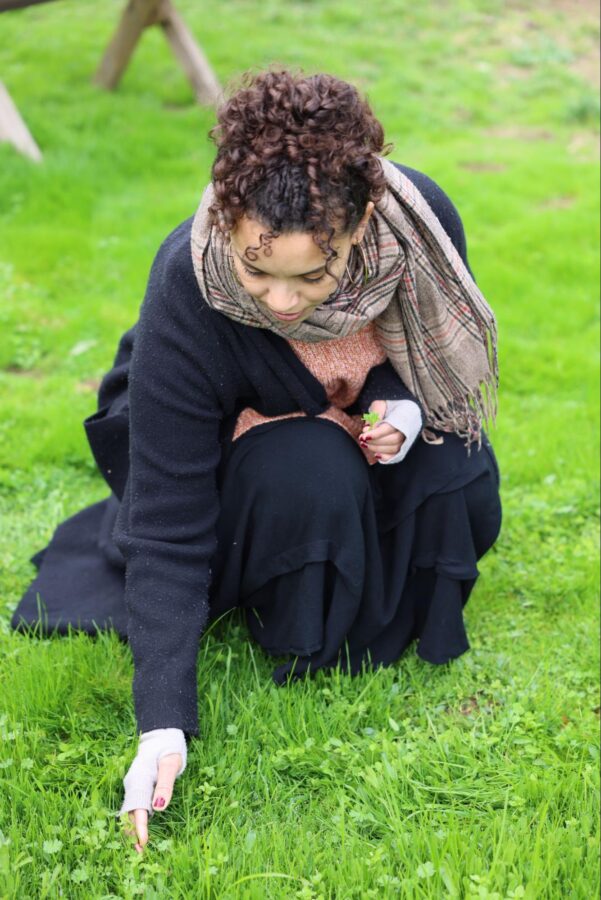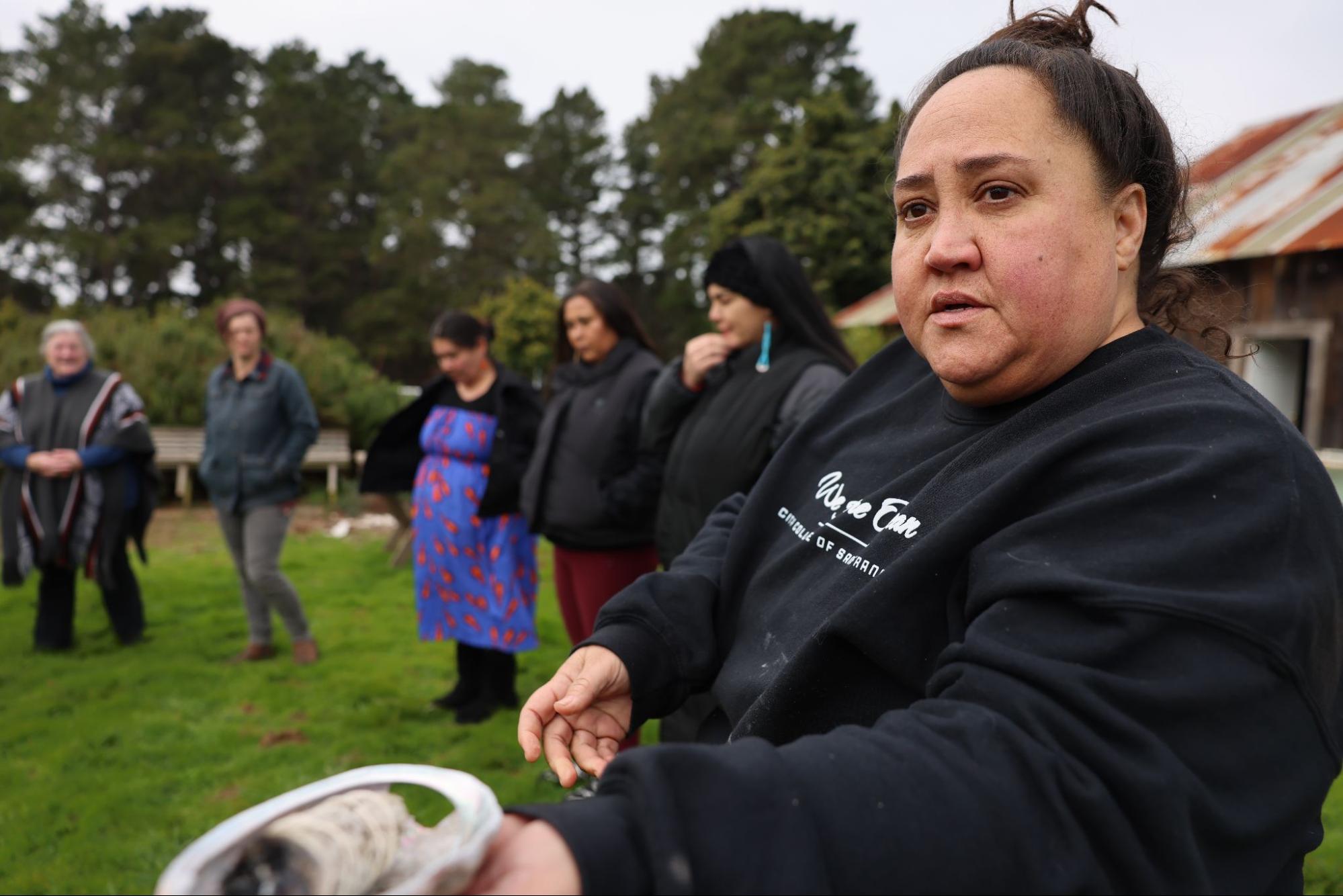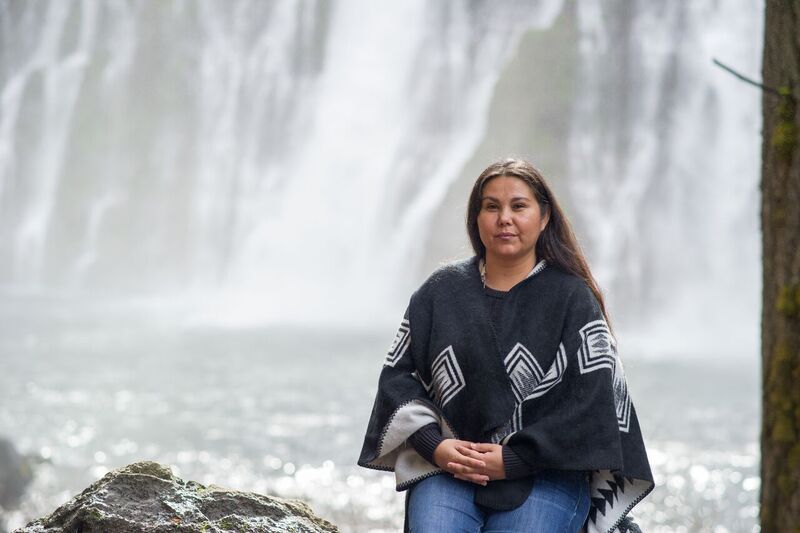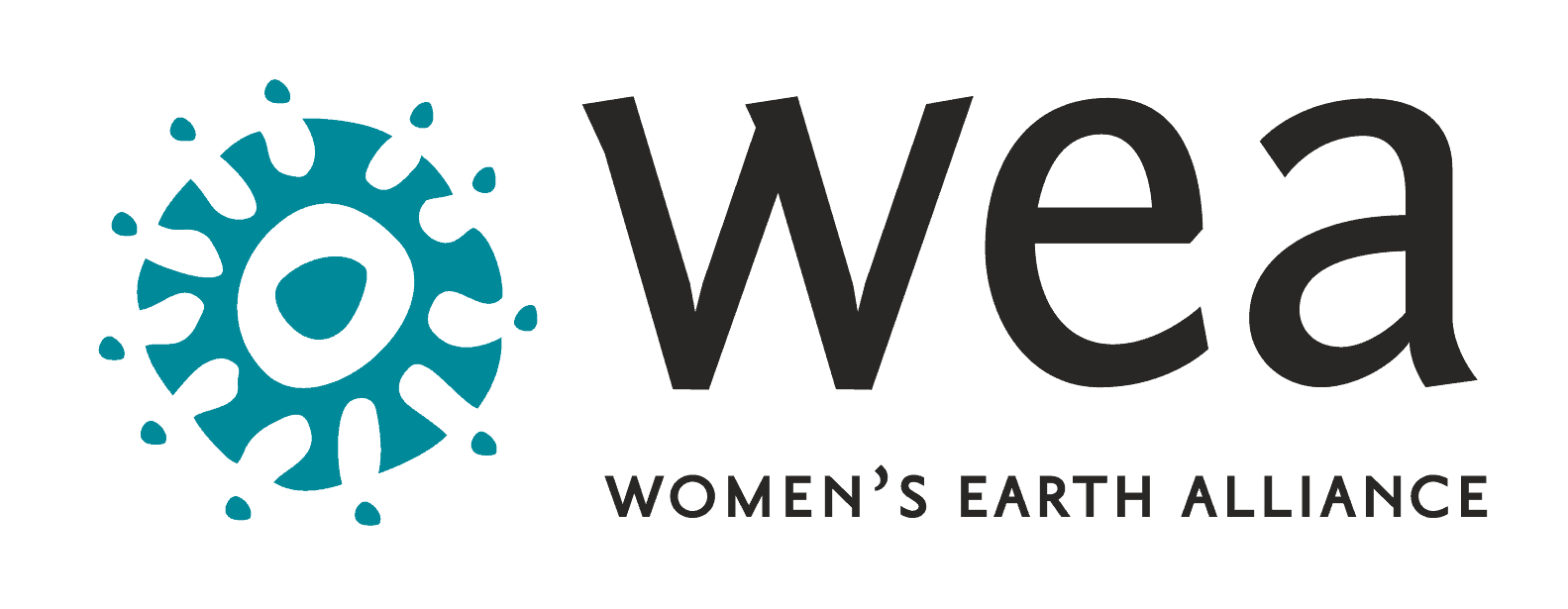When the Climate Crisis Breaks Your Heart: Moral Injury and the Power of Women’s Resilience
Protecting land, water, and community is an act of deep love — but for those brave enough to do it, the cost is too often heartbreak.
Across the world, people on the frontlines of climate justice—many of them women—are carrying not only the weight of environmental devastation, but also the emotional and moral toll of trying to stop it.
The climate crisis is not only reshaping landscapes—it’s reshaping lives. And while its physical effects—rising seas, intensifying storms, and biodiversity loss—are widely recognized, there’s another impact we talk about far less: the harm it causes to people’s hearts and minds. Fear. Grief. Exhaustion. Disillusionment. Trauma. And what some now name as moral injury—the distress that comes when living and working in ways that betray our deepest values, often because unjust systems leave us little choice.
But if moral injury helps us name the harm—grassroots women leaders are helping us name the response.
Across movements and communities, women are leading healing-centered approaches that recognize what this moment requires: care, connection, restoration, and belonging. These women aren’t just fighting for the environment—they’re tending to the wellbeing of our people. They’re transforming activism into a practice of healing. And their leadership offers a crucial reminder: that resilience isn’t just about surviving these times—it’s about creating new ways of living, leading, and relating to each other in the face of crisis.

Why This Work Hurts: Understanding Moral Injury in the Climate Crisis
Across climate justice movements, the fight to protect land, water, and communities is growing harder—not only due to escalating environmental threats, but also rising resistance to climate action. Yet even amid these challenges, grassroots women leaders have long modeled a different path: healing-centered leadership rooted in trauma stewardship, ancestral knowledge, and community care.
To understand why these healing-centered approaches are so vital, we first need to understand what moral injury actually is—and how it shows up in climate justice work.
Moral injury, a form of climate trauma, describes the distress people feel when their deeply held values are violated—whether by their own actions, by being forced into impossible choices, or by witnessing harm they feel powerless to prevent. It shows up when the way we want to live comes into painful conflict with the systems we are living within.
As mental health leader, herbalist, and Women’s Earth Alliance Leader Brooke Bridges describes, this tension often shows up in everyday choices—where the systems we live in don’t align with the values we hold.
“A limited budget might force us to make choices that conflict with our values,” Brooke explains, “like having to rely on large corporations for overnight shipping, despite our desire to support smaller, ethical businesses.”
And this isn’t just about individual choices. It’s about living within systems that make contributing to harm nearly impossible to avoid. People who care deeply about the Earth still drive cars, use plastic, rely on fossil fuels—not because they want to, but because those are often the only options available.

At the same time, we are watching corporations, governments, and institutions—those with the most power to act—choose again and again to delay, deny, or water down climate solutions. That gap—between what we know is needed and what those in power are willing to do—is profound.
And for many, especially young people who are inheriting the full weight of this crisis, that reality can be devastating. To care so deeply, while feeling powerless to create meaningful change within these systems, is exactly the kind of harm that moral injury helps us name.
Because the climate crisis touches every part of our lives, this dissonance can feel constant. And that reality—of living within systems that force impossible choices—leaves many feeling isolated, exhausted, and stuck.
The Unequal Burden of Moral Injury
Moral injury may be a growing experience of our time—a consequence of both the climate crisis itself and the increasing polarization of environmental action. But like so much about this moment, it is by no means experienced equally.
In the U.S. and around the world, marginalized communities—particularly racialized and Indigenous peoples—bear the brunt of this injury. They face the most severe consequences of climate change, not because of chance, but because of generations of environmental racism, colonization, and systemic discrimination. And layered on top of these material harms is the emotional toll: disproportionately high rates of mental health struggles, trauma, and even suicide.
For climate activists and organizers—especially those from these frontline communities—the harm is both personal and systemic. They face daily barriers to change, slow or reversed progress, and the repeated experience of watching their hard-won efforts undermined. It's no wonder that burnout and moral injury are so common in climate justice spaces. One study found that nearly 19% of humanitarian workers showed symptoms of PTSD, 15% experienced depression, and 19% reported burnout.
And still—these are the people and communities leading this work.
Grassroots women leaders, in particular, are navigating these impossible conditions while holding the emotional labor of tending to their families, communities, and ecosystems. They face the harm of climate injustice—and the harm of doing this work within systems actively resisting change.
As climate justice becomes more politicized, even basic acts like planting trees or protecting land have become sites of resistance—facing backlash, defunding, or even criminalization. Powerful corporate and political interests shut down climate programs, restrict funding, or create legal roadblocks overnight. For many on the frontlines, this creates a constant sense of instability and powerlessness.
The politicization of climate justice has deepened these challenges, alienating those on the frontlines of climate change and undermining efforts to implement sustainable, community-led solutions. Activists and community leaders are finding themselves not only ignored, but actively opposed.
As WEA Leader Vanessa Uriarte, Executive Director of Amigxs del M.A.R., shares: “As a consequence of the work we do… in the public exposure of my person as spokesperson, I have faced damages and public attacks for our positions and work.”
This is the hostile landscape grassroots women leaders are navigating every day. And within it, moral injury has become a defining challenge—not only threatening individual well-being, but threatening the long-term resilience of the movements we need most.
But while moral injury helps us name this harm, it’s not the end of the story. These women are not only carrying this harm — they are transforming it, showing us what it means to move through harm and modeling healing-centered, relational responses that are reshaping what activism can be.
Grassroots Women’s Call to Action and Solutions

Grassroots women leaders have long known what it means to protect not just the Earth—but each other.
In the face of environmental harm, systemic oppression, and the rising experience of moral injury, these women have been at the heart of building healing-centered approaches to climate justice. Approaches that are rooted in care. In connection. In community resilience.
As Brooke reflects, naming moral injury can itself be transformative: “Ultimately, these experiences of moral injury serve as a constant reminder of the need for systemic change,” she shares. “They drive me to advocate for more equitable and compassionate approaches in both mental healthcare and our broader societal structures.”
Acknowledging moral injury doesn’t just help us name the harm—it helps us imagine a new way forward. This is something grassroots women leaders have long understood: when we can recognize the limits of traditional climate activism, we create space to shape movements that are rooted not only in action, but in healing, care, and community resilience.
This wisdom is at the core of WEA’s work. And it’s what guides WEA’s U.S. World Weavers Design Team—a powerful collective of women leaders, organizers, healers, and climate activists working in partnership with WEA to design strategies for this moment.
Together, they ask: While we cannot erase trauma, how can we ensure we do not amplify its impact?
Their call to action centers on four key strategies—practices that reflect the deep knowledge of grassroots women everywhere, and offer a blueprint for resilience.

1.Trauma-Informed Climate Action
Recognizing that climate justice work carries real emotional and psychological impacts, trauma-informed action invites us to care for the well-being of those doing the work.
Camille Hadley, Co-Founder and Executive Director of Little Growers Inc. and a WEA Leader, embodies this practice. For the past two years, she has led a Community of Practice on climate trauma, bringing together 12 community leaders from across the U.S. These kinds of peer support networks create spaces for shared experience, collective wisdom, and emotional resilience—ensuring that leaders can continue their work with care and sustainability.
2. Earth-Centered Wisdom and Indigenous Justice
Indigenous knowledge and traditions remind us that healing the land is inseparable from healing ourselves. Practices like ritual, storytelling, and reconnection to land offer powerful tools for processing grief, building resilience, and remembering belonging.
This connection is both spiritual and physical — rooted in place, memory, and generations of care.
For the Pit River Tribe and other Indigenous communities in Northern California, that place is the Sáttítla Highlands and Medicine Lake Volcano — sacred lands that have been at the heart of their cultural and spiritual life for centuries. After three generations of organizing, grounded in their enduring relationship with this land, these communities recently celebrated a hard-won victory: the designation of the Sáttítla Highlands as a national monument.

Morning Star Gali (Ajumawi Band of the Pit River Tribe), WEA Leader and Co-Director of Indigenous Justice, shares that celebration here won’t look like fanfare or extraction—it will look like returning. The victory here is returning to and reconnecting with these sacred lands.
Because reconnection is resistance. Reconnection is healing.
3. Restorative and Relational Organizing Movements
Movements that prioritize relationships and mutual care over transactional activism create stronger, more sustainable networks for change.
As Brooke shares, “We also need space to be seen by others who understand us. To talk to others about the traumatic experiences of climate-related catastrophe and how we’re individually [and collectively] impacted.”
Supportive relationships within activism don’t just offer comfort—they create a foundation of emotional safety, strength, and resilience. They act as a jumping-off point, allowing individuals and communities to navigate difficult moments and continue their advocacy with care.
Just like a mycelial network in the forest, community-based activism transfers energy, wisdom, and resources between people—“helping people identify and utilize the strengths they already possess and equipping them with the tools and processes to work toward solutions,” as Brooke reflects.
Women-led movements embody this every day—emphasizing collective well-being, integrating practices of communal support, peer healing, and restorative justice frameworks into their organizing. These relationships nourish not only those doing the work—but the work itself.
4. Structural Belonging and Systemic Change
Long-term solutions to the climate crisis must be rooted not only in environmental sustainability—but in justice, belonging, and systemic change.
For marginalized communities, the climate crisis is inseparable from the trauma of systemic oppression. As Vanessa shares: “Historical trauma is part of each of us who live in a colony. The more than 500 years of colonialism in Puerto Rico permeates every area of our lives.”

This is why climate activism cannot happen in isolation from anti-colonial and anti-capitalist frameworks. As Vanessa reminds us, real solutions require “situating ourselves in the material reality of our country”—and ensuring that the work of climate justice doesn’t replicate the same patterns of harm it seeks to heal.
This means advocating for policies that dismantle systemic inequities. It means centering the voices, knowledge, and leadership of frontline communities in decision-making processes. And it means building structural belonging—creating systems where every person, every community, and every way of knowing has a place.
Because healing the Earth requires healing the systems we live within.
Conclusion
The climate crisis is not only an ecological emergency—it’s a deeply personal and collective one. It is a crisis of land, of systems, and of spirit.
And for those on the frontlines of climate justice—especially grassroots women leaders—the harm is personal and profound. It shows up in exhaustion, in grief, in moral injury. But it also shows up in the extraordinary ways women leaders are tending to their communities, their ecosystems, and themselves.
As climate action becomes increasingly politicized, and as activists face systemic barriers, suppression, and burnout, the need to name this harm—and respond with care—has never been more urgent.
Grassroots women’s movements are leading the way.
With earth-centered wisdom, trauma-informed practices, relational organizing, and systemic vision, they are showing us that true climate justice isn’t just about policy or protests—it’s about collective healing, belonging, and transforming the very systems that have caused harm.
This work reminds us that healing is not separate from activism. Healing is activism.
And in the face of so much that feels impossible—that might just be our greatest power.
